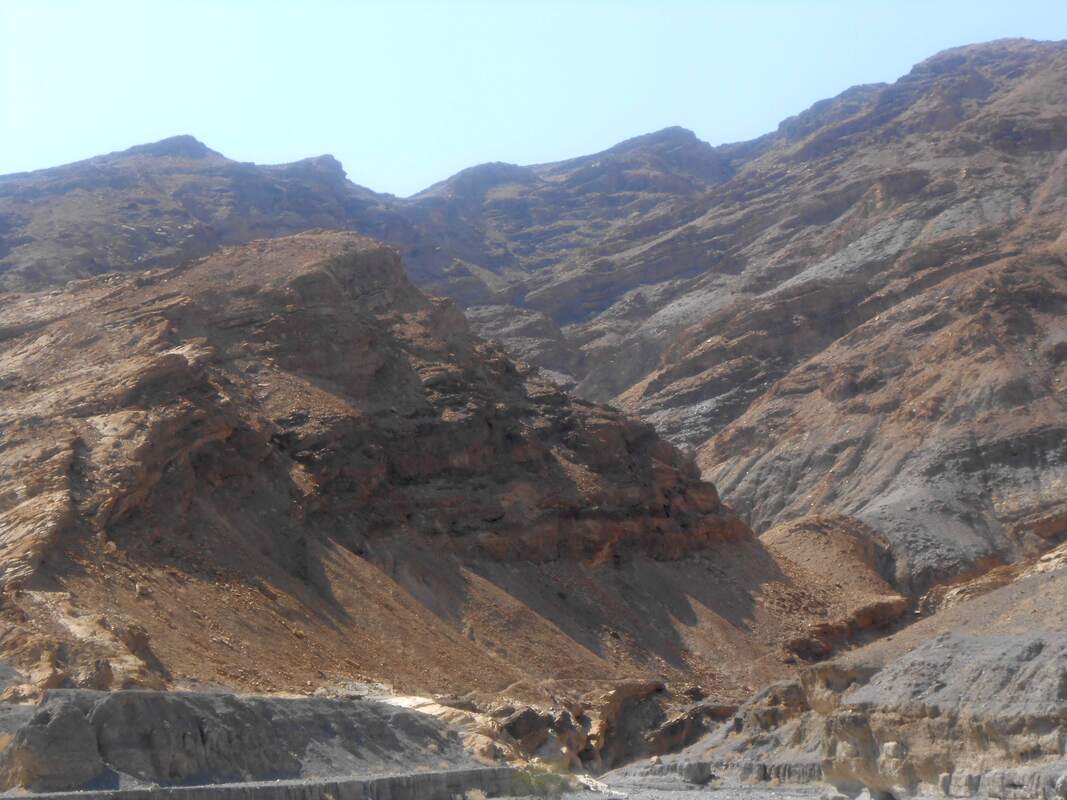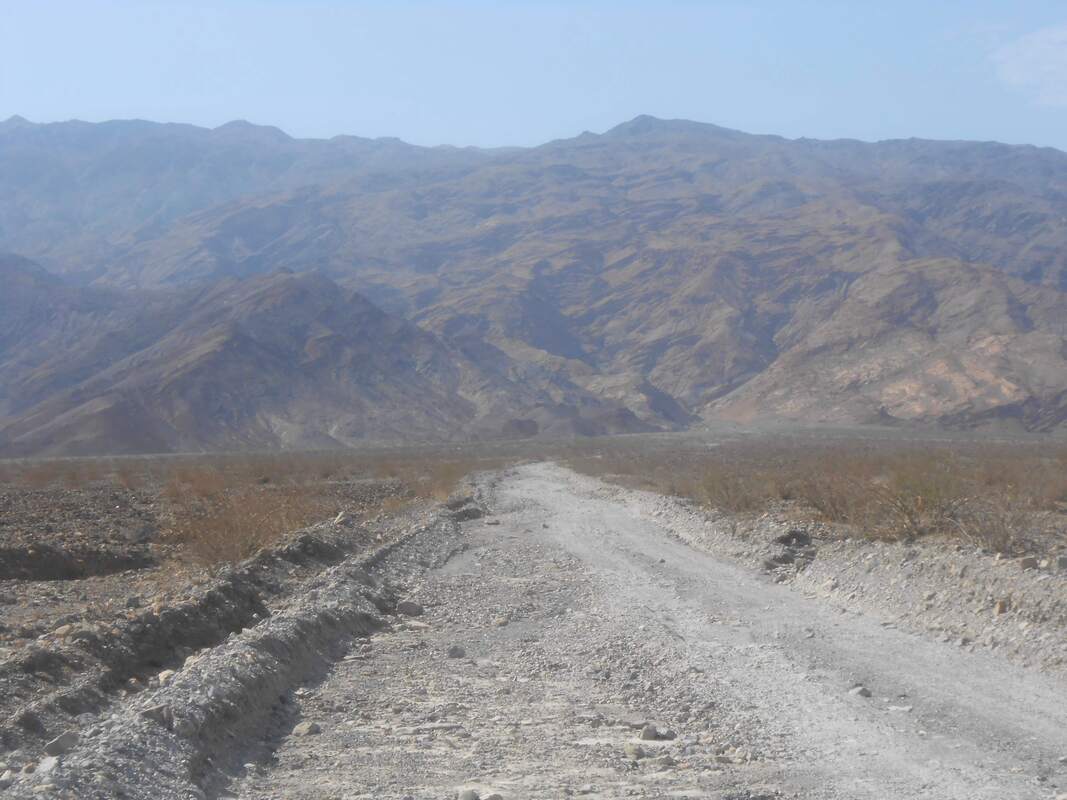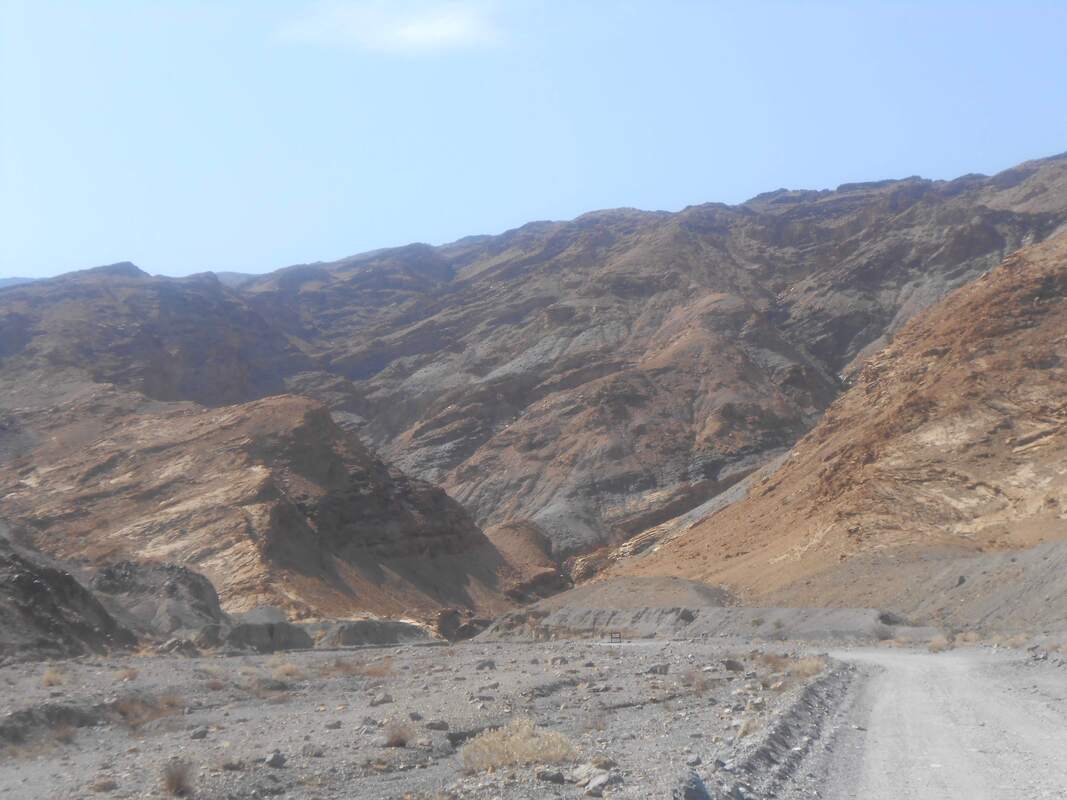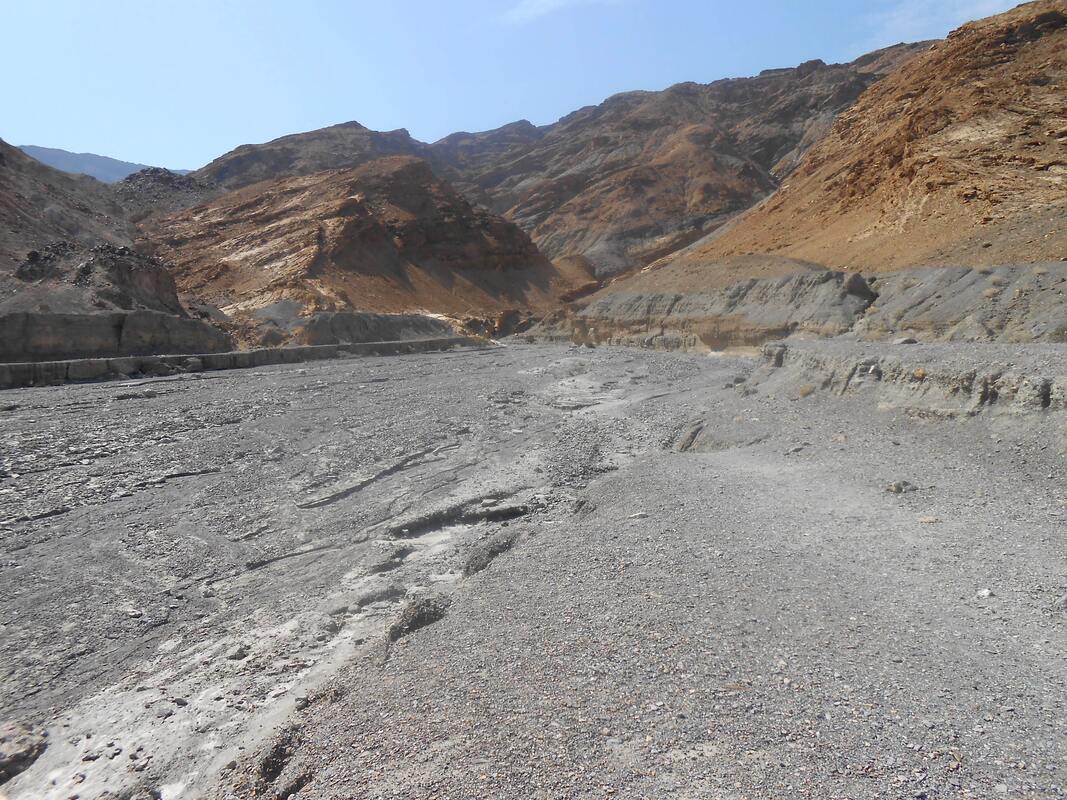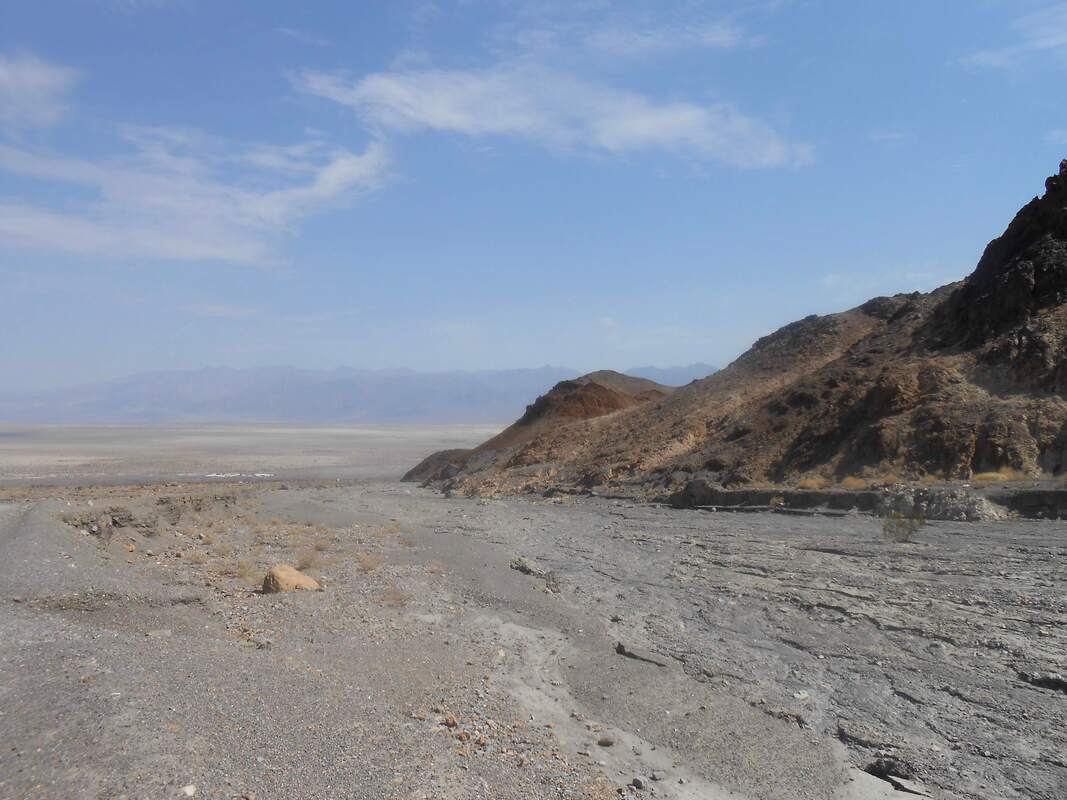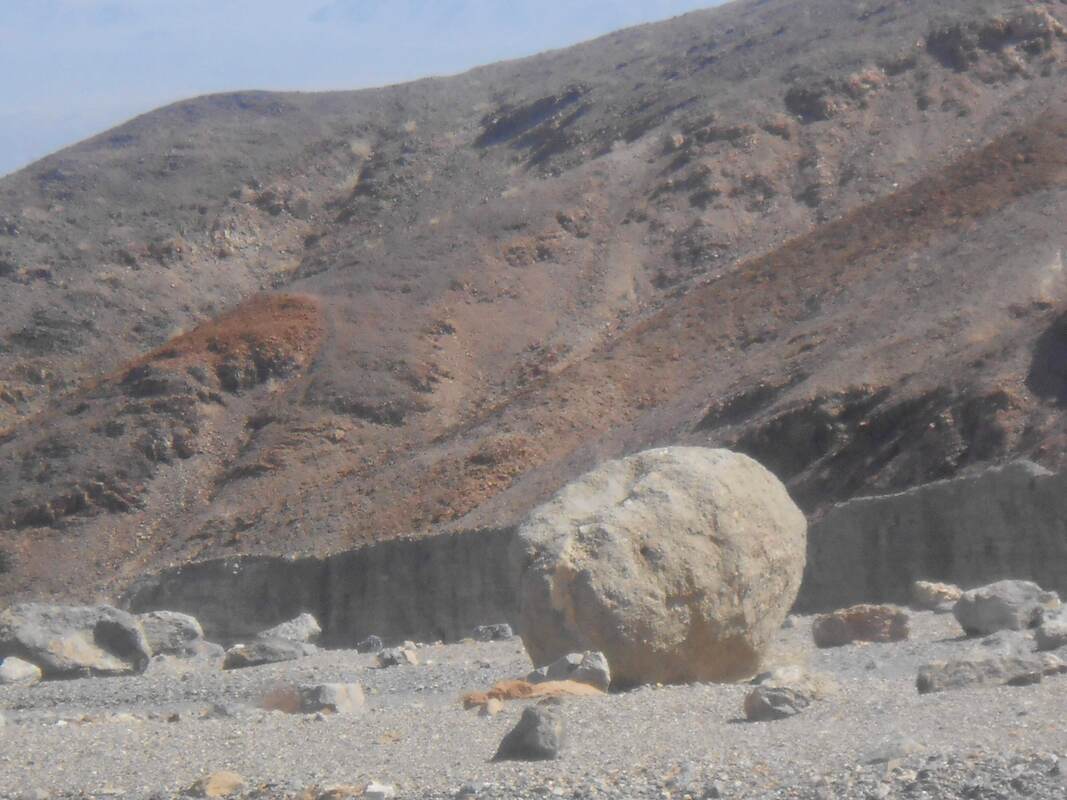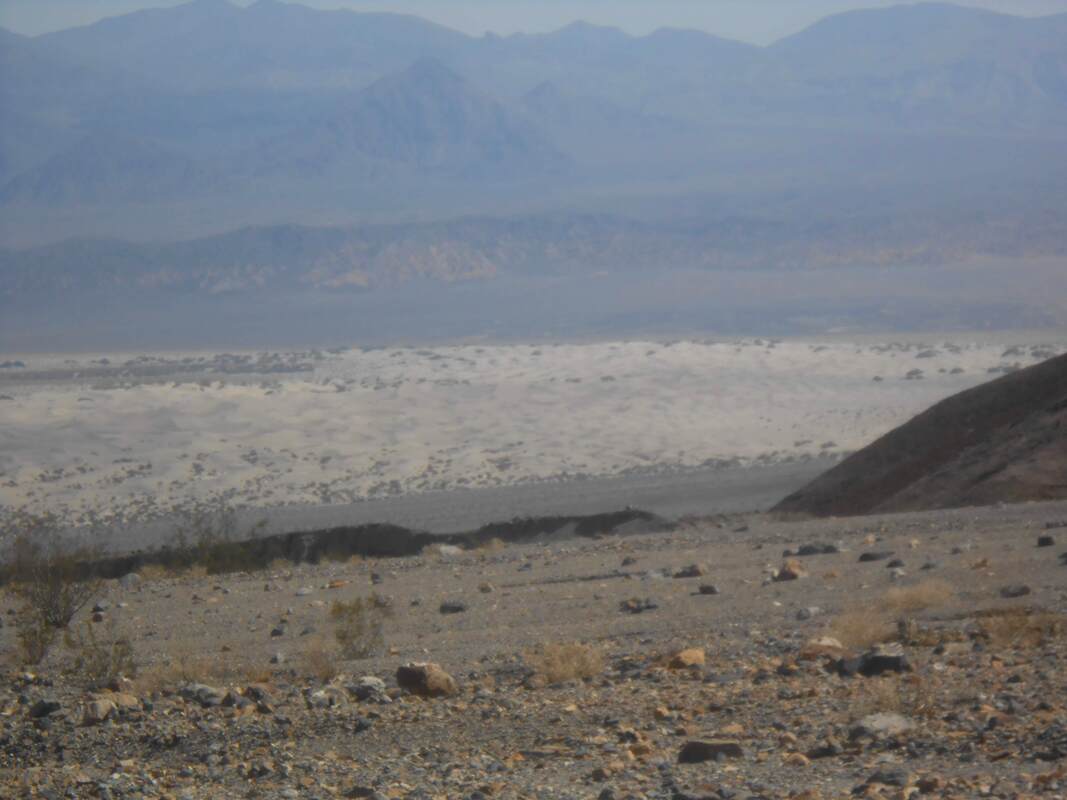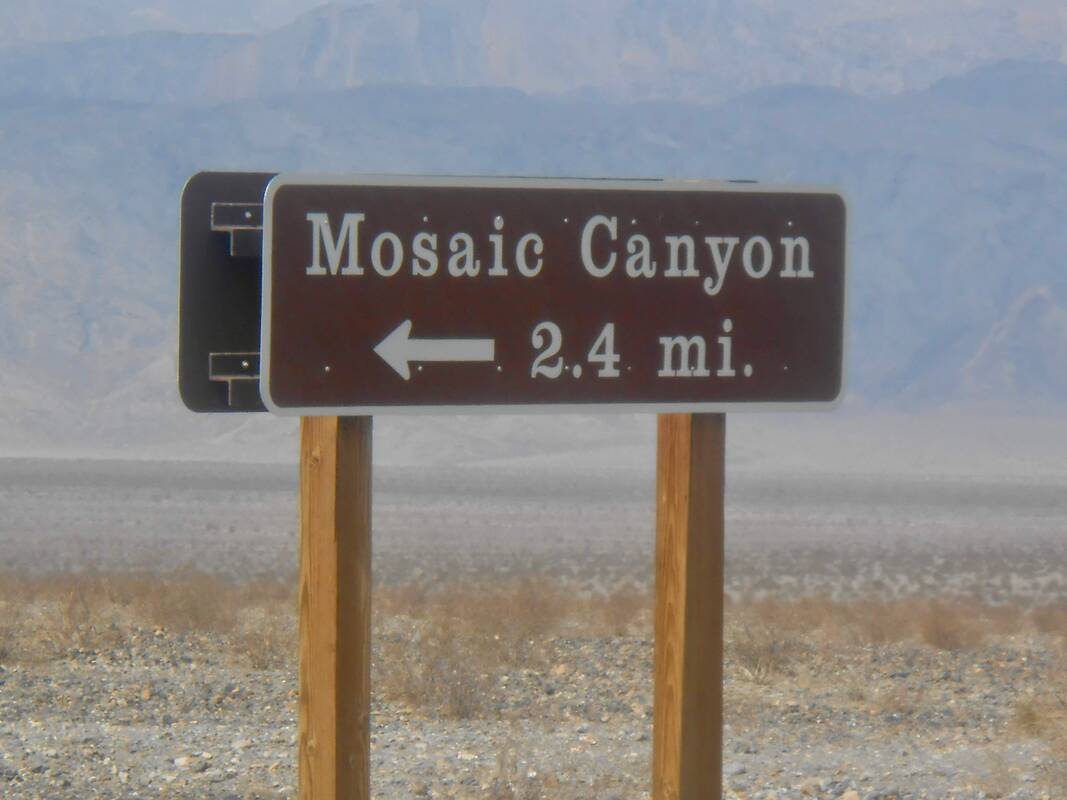|
Mosaic Canyon is located on a mountain crest next to Stovepipe Wells in Death Valley. Mosaic Canyon is a massive rock outcrop that has multi color patches that run for short lengths in all directions. This canyon literally looks like mosaic art, so the name definitely fits the bill of fare! The Mosaic Canyon access point is located at the end of a dirt road that goes straight up the mountain, so this destination also offers great views of Death Valley. The crest line vantage point overlooks Stovepipe Wells, Mesquite Dunes and the Devil’s Cornfield, while a steep desert mountain dry wash that runs downhill to the resort village can be seen in its entirety. The Mosaic Canyon side is worth taking the time to do, but the dirt road going to this destination is too rough for an ordinary passenger car. A high ground clearance vehicle or 4×4 is best for doing the short trip up the mountain, especially after recent rains because the road runs along a dry wash. The Mosaic Canyon dirt road can be smooth after the road maintenance crew does a grading job, but after a rainstorm, the road becomes cluttered with large rocks that can damage small vehicles. A rainstorm can quickly turn this pathway into roaring whitewater rapids, so as can be imagined, Mosaic Canyon is not a safe place to be if rain is in the forecast. Another factor to keep in mind when planning a Mosaic Canyon side trip is the extreme heat. The temperatures are near the top of the thermometer bulb in Death Valley during summer, so be sure to bring a few extra gallons of water just in case the unexpected occurs. Gas and groceries are available at Stovepipe Wells at the base of the mountain, so if worse comes to worse, rescue is within walking distance. On the day that I visited Mosaic Canyon, the outdoor temperature was about 120ºF by 11:00AM. I toured Salt Creek, the Devil’s Cornfield, Mesquite Dunes and Stovepipe Wells before going to Mosaic Canyon, because all these destinations are in the same local area. By the time I got to Mosaic Canyon it was well over 125ºF, so I decided to save canyon the hike for another day and settled for taking a few pictures of the views of Death Valley from the high ground. After returning from the day tour to my job site residence in Death Valley, I started processing the photos. Immediately I noticed that the quality of the photos grew progressively worse as the outdoor temperatures increased that day. I used an inexpensive pocket camera during the trip and the camera could not withstand the 125ºF+ heat of Death Valley. Every picture was blurry, just like an oil painting that started to melt. Saving the few good photos ended up being the only option. On every Death Valley photography mission done after the Mosaic Canyon trip, I left the pocket camera behind and carried a big Nikon D90 that was designed to work in extreme environmental conditions. Budget minded pocket cameras and smart phone cameras definitely will not yield good photos in the extreme heat conditions. This is good for visitors to keep in mind, so no frustrating moments occur after the trip is done. Oddly enough, the day after I visited Mosaic Canyon a big monsoon rain storm passed through. A massive flash flood rolled down the mountain dry wash and roared through Stovepipe Wells Village. Stovepipe Wells had to be evacuated, because of the flooding, so we accepted their guests at the resort where I worked just down the road. Three big rain storms flooded Death Valley that same week in the Furnace Creek region and to have such events occur in a short period of time is a very rare occurrence in this extremely arid environment. On another side note, while I was working at Furnace Creek in Death Valley, the world record high temperature of 136ºF that was set at El Azizia, Libya was finally officially declared invalid by the Geneva Convention. The world record was denied because faulty temperature recording equipment was used. As a result, Furnace Creek was officially re-crowned by Guinness as being the hottest place on earth with a mark of 134ºF. All of us local Furnace Creek workers had a good celebration that day! They call this place Death Valley for a good reason. Death Valley is absolutely as hot as hell during the summer months and this place plays havoc on any kind of electrical equipment that is brought along for the trip. Sneakers melt on the pavement and anything that glows in the sunlight is too hot to touch. Cheap cameras and smart phones go on the blink, while a low budget car battery will swell to the size of a soccer ball. Monsoon season flash floods can also quickly make the roads impassible and cause dire situations. The Death Valley environment can quickly turn a pleasant afternoon picnic into a survival situation, especially during the summer season, so it is always best to prepare for the worst when visiting this majestic place!
0 Comments
Your comment will be posted after it is approved.
Leave a Reply. |
Leave no trace!
New!
Destination West YouTube channel! https://www.youtube.com/@DestinationWestOrg *The Destination West website upgrading project is well underway. Unique YouTube slideshows are replacing the outdated Flickr photo galleries. The new videos feature modern graphics and alternative music instrumentals that enhance the viewing experience. Some articles are being condensed, while others are getting much needed edits. As everybody knows, the bulk of the original articles and photos were published on the fly during the Covid camping venture and there were limitations. Upgrading is the way to go and more articles will receive a makeover each week until this project is completed. After that, I will be able to gather new material. There is light at the end of the tunnel!
JD Lane Archives
July 2024
Donations help the Destinaton West project continue into the future!
Go Fund Me! This website uses marketing and tracking technologies. Opting out of this will opt you out of all cookies, except for those needed to run the website. Note that some products may not work as well without tracking cookies. Opt Out of Cookies |
